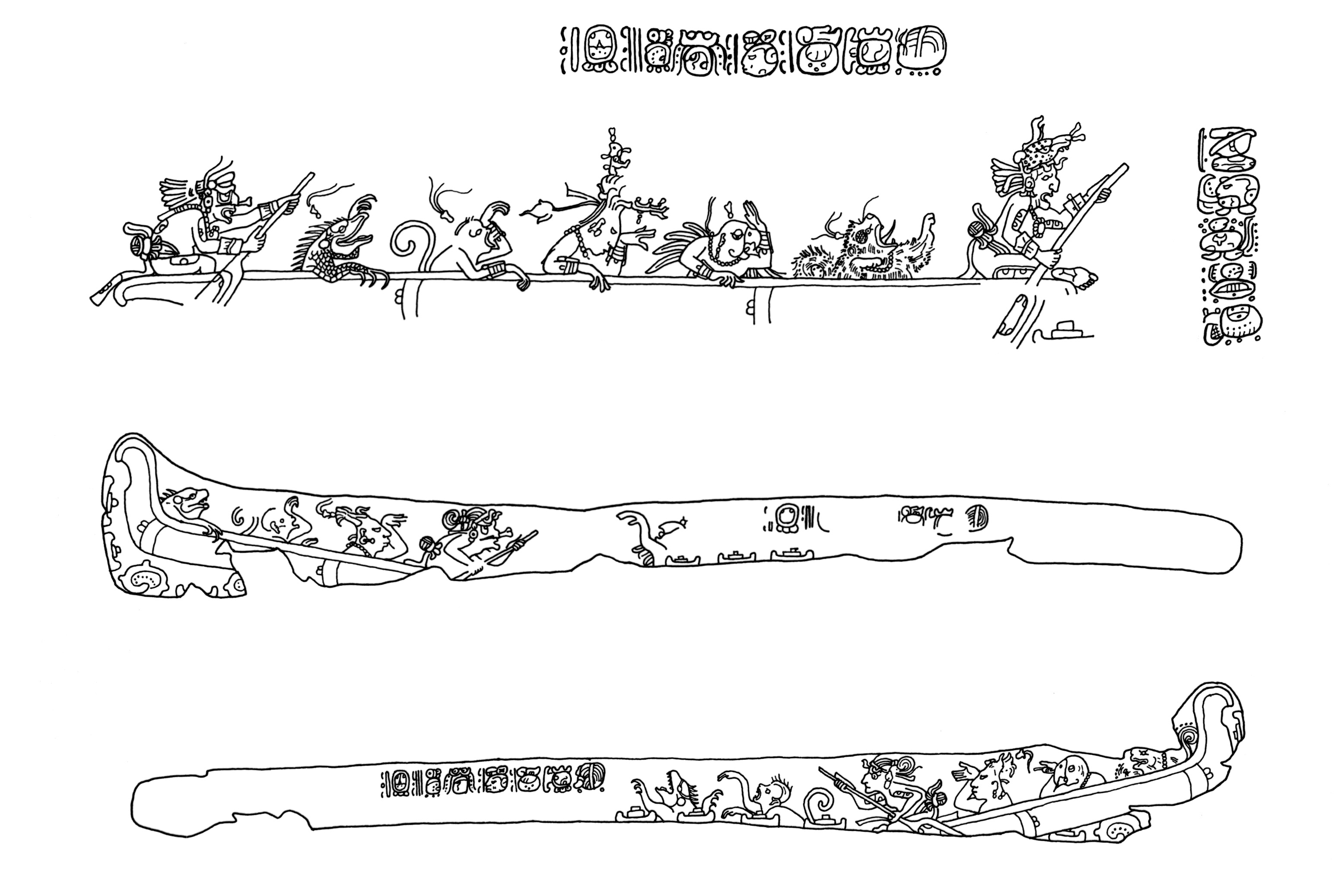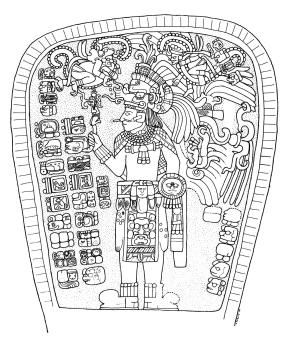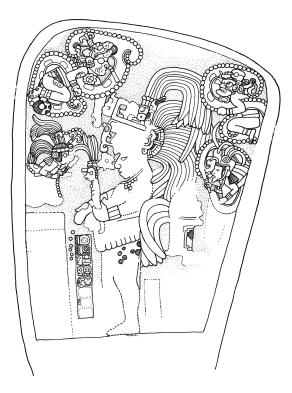Modern Maya epigraphers at Mani and Iximche have documented via two carved stelae the history of their communities. The Iximche Stela anticipates the celebration of the 13th Bak'tun in December of 2012. To read the full story click on the following link below:
http://discovermam.org/2013/11/6-ajaw-18-kej-november-26-2013-two-stelae-two-maya-languages/
The Iximche inscription recounts Maya history in the Kaqchikel language using Classic Maya glyphs. The text opens with the era day Long Count on 13.0.0.0.0 4 Ajaw 8 Kumk'u:
Modern scribes designed their opening Long Count after one carved on Quirigua Stela C with a few modifications to fit the hight and width of their new composition. Here is a partial illustration of the original Quirigua text:
Interestingly, the Iximche creation account is abridged from the Quirigua text and mentions only the planting of the three "celestial" stones/thrones of creation. The modern Kaqchikel scribes then add a few new interpretive words. They say that the three stones were creados los contadores de la cuenta vigesimal del tiempo.
This interpretation is in agreement with what we know about the era day story as recorded in ancient inscriptions when time stood at the very heart of the cosmogonic act.
http://discovermam.org/2013/11/6-ajaw-18-kej-november-26-2013-two-stelae-two-maya-languages/
The Iximche inscription recounts Maya history in the Kaqchikel language using Classic Maya glyphs. The text opens with the era day Long Count on 13.0.0.0.0 4 Ajaw 8 Kumk'u:
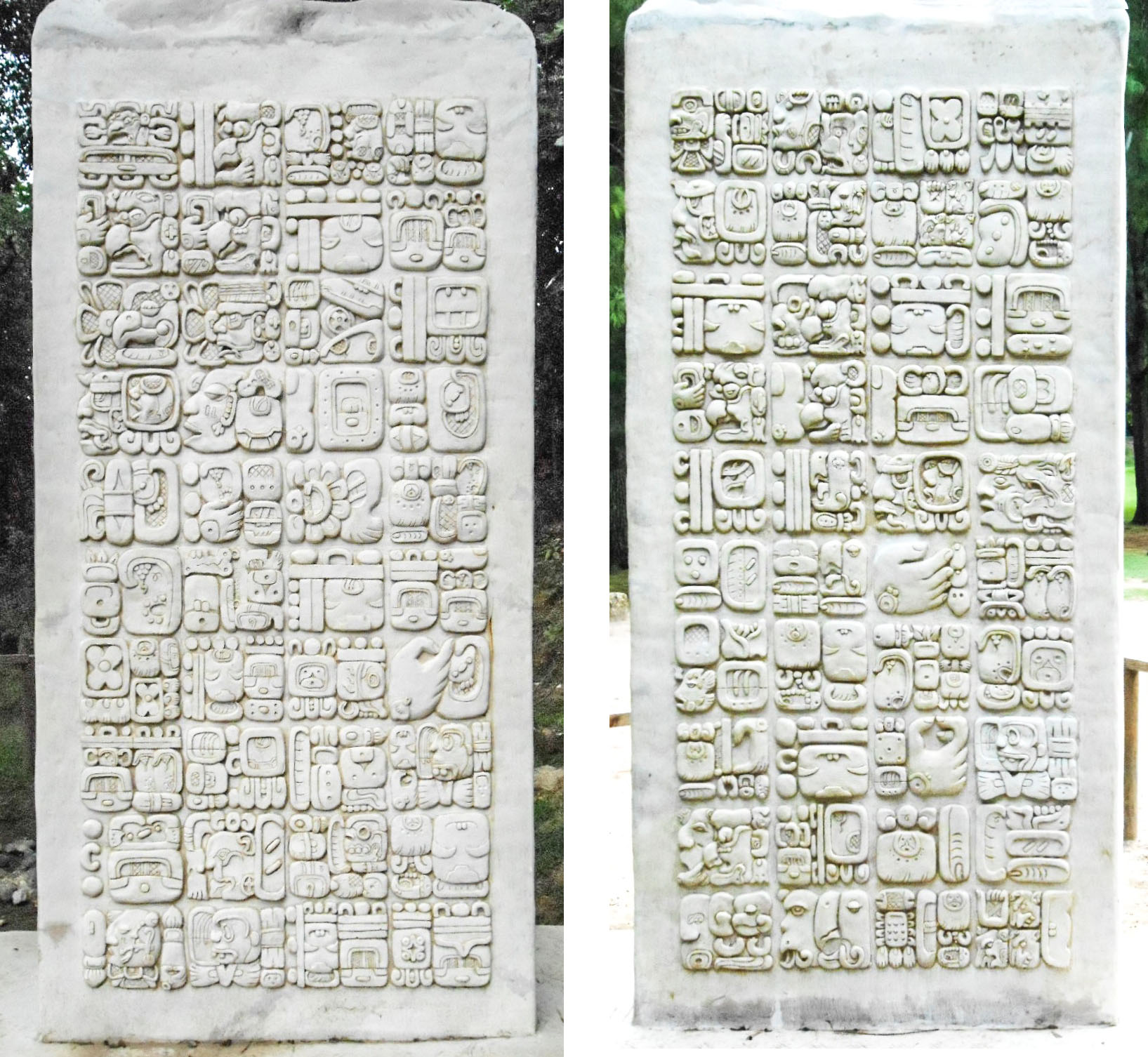 |
| The new Iximche stela. Photo courtesy of the MAM Web Blog: http://discovermam.org/wp-content/uploads/2013/11/8-and-9.jpg |
Modern scribes designed their opening Long Count after one carved on Quirigua Stela C with a few modifications to fit the hight and width of their new composition. Here is a partial illustration of the original Quirigua text:
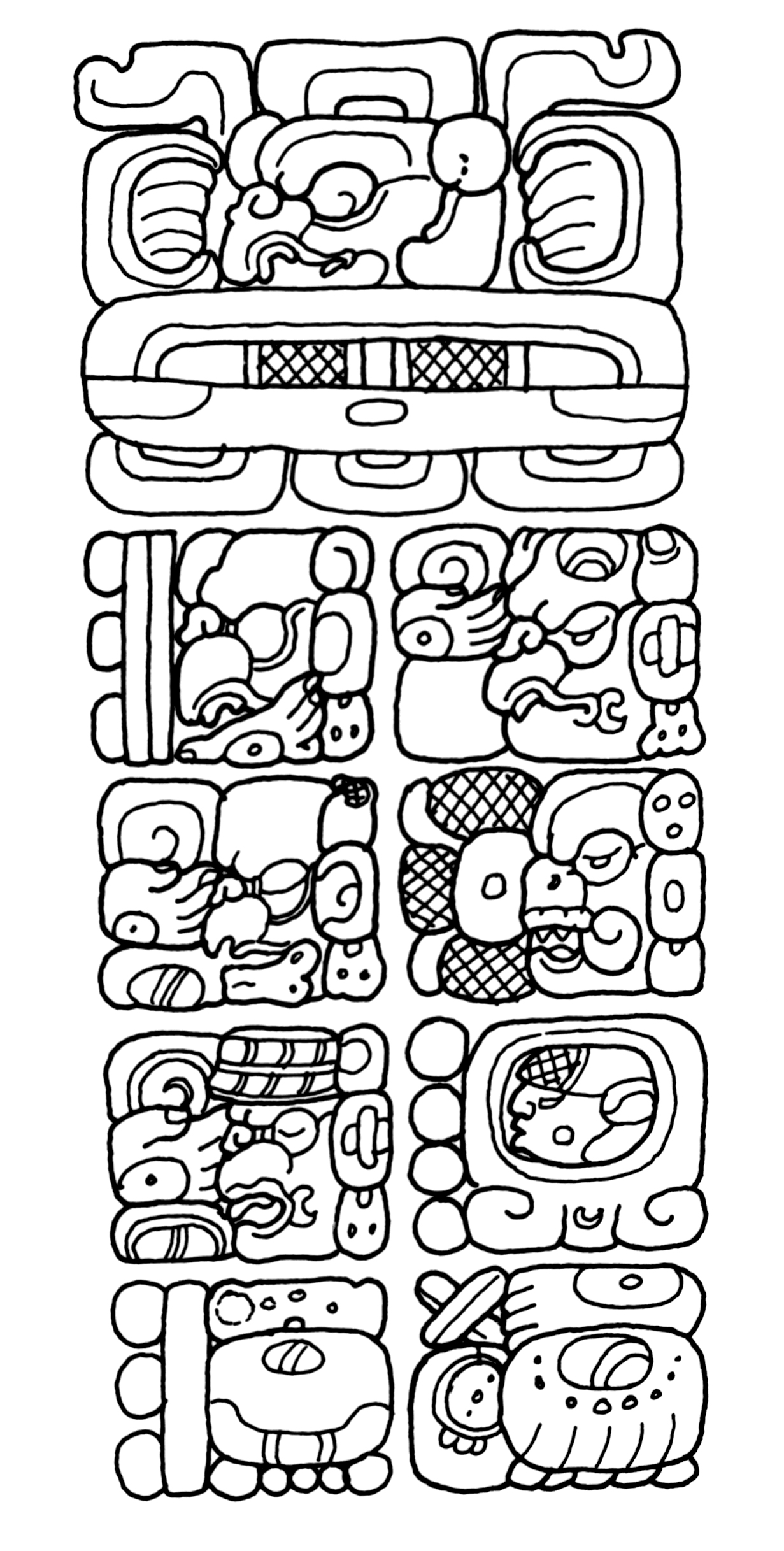 |
| Quirigua Stela C. Drawing by Linda Schele courtesy of FAMSI. |
 |
| Drawing of the new Iximche stela. Photo courtesy of the MAM Web Blog: http://discovermam.org/wp-content/uploads/2013/11/101.jpg |
According to ancient scribes, the gods of time (los contadores--the gods of the Pik, Winikhaab, Haab, Winik and K'in time periods) gathered together with the gods of 0, 4 and 8 (the Aj Mih K'in, K'inich Ajaw, and the Aj Ixim) to reset the orderly motion the vigesimal count--the basis of all Maya counting. In fact, the Dresden Codex records that the God of Number Twenty (the Aj Winik) had to be born into the world shortly before creation (Callaway 2009). Winik is also a name for man himself (Barrera Vásquez 1980) who counts with twenty fingers and toes. So, his birth signalled the birth of man's consciousness and ability to chart the heavens and measure time (Brotherston 1992). In this way, the gods reaffirm at the close and start of each cycle a cosmic order that was set down at foundation of the cosmos and given to man to maintain. How wonderful it is to see the Modern Maya maintaining this sacred count with the planting of new stones for a new era!
Works Cited
Barrera Vásquez, Alfredo
1980 Diccionario Maya Cordemex. Mexico: Ediciones Cordemex.
Brotherston, Gordon
1992 The Book Of The Fourth World: Reading Native Americans Through Their Literature. Cambridge: The Press Syndicate Of The University Of Cambridge.
Callaway, Carl D.
2009 The Birth of the Number Twenty in the Dresden Codex. In: The Maya and their Sacred Narratives: Text and Context in Maya Mythologies. Le Fort, Geneviève, Raphaël Gardiol, Sebastian Matteo & Christophe Helmke (eds.): Acta Mesoamericana, Vol. 20, pp. 75-87. Markt Schwaben: Verlag Anton Saurwein.

